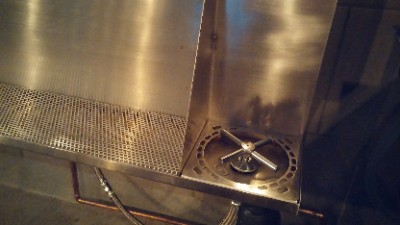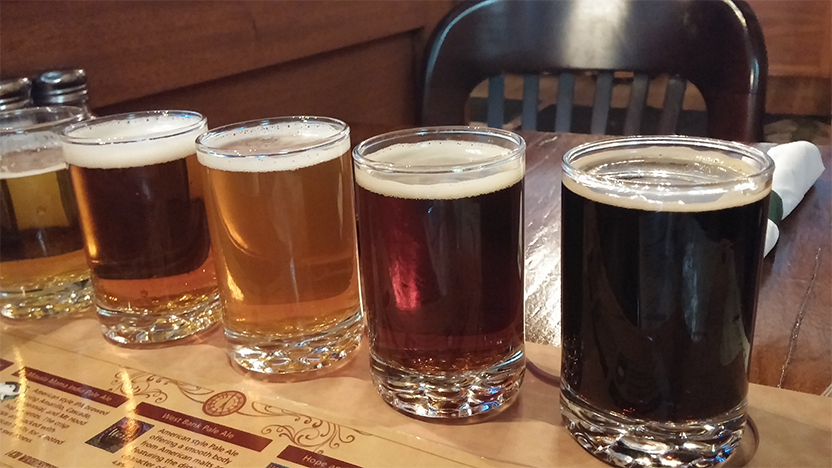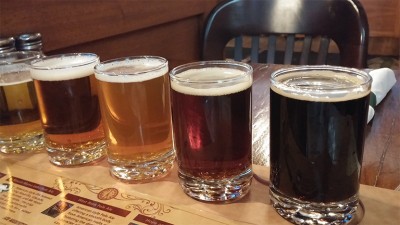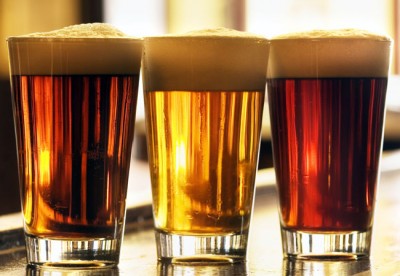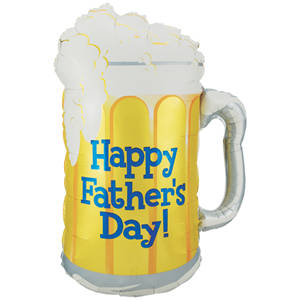There has been a lot of talk lately about glass rinsers.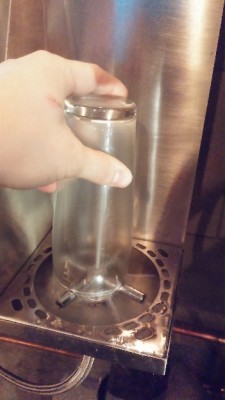 They are popping up all over the state in craft beer bars and have gained a lot of interest in the media as of late. I don’t mean to say they are bad or unnecessary. Rather, I would like to lay out the facts about them. The truth is that they should be unnecessary if your bar does everything correctly and that they are crucial of your bar does not.
They are popping up all over the state in craft beer bars and have gained a lot of interest in the media as of late. I don’t mean to say they are bad or unnecessary. Rather, I would like to lay out the facts about them. The truth is that they should be unnecessary if your bar does everything correctly and that they are crucial of your bar does not.
Before we go any further, be sure to follow me on twitter and follow MN Beer Activists on either twitter or Facebook
TC Beer Dude – https://twitter.com/TCBeerDude
Glass Rinsers
For those who don’t know what these are, they are a small sprayer built into the bar, usually near the tap tower. Glasses are pushed down onto a small, perforated plate, which triggers a blast of water into your glass, giving it one final rinse before filled with your favorite craft beers. The rinser is designed to ensure that every pint of beer is served in the way that it was intended to be served. They accomplish three things:
- Rinse out any dust particles or residual sanitizer that may leave a trace of soapy flavor in a glass
- Accomplishes a better pour because the glass is already wet
- Cooling down a glass that may be warm from the mechanical dishwasher
What your bar should be doing…
The arguments for last-second rinsing of your beer glass are all very compelling. We have all had a beer from a dirty glass at a bar or a beer that tasted funny, but you can’t really tell why. The truth is that all of these can be avoided due to proper 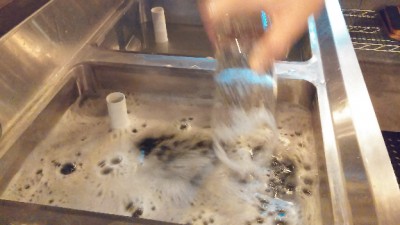 treatment of your glassware to begin with. I think everyone can agree that the best bars are the ones with a very high attention to detail. There are a lot of moving parts to running a bar and a lot of work that goes into a great craft beer program. There can be high turnover in the restaurant industry and training bartenders and barbacks on every minute detail is a colossal task.
treatment of your glassware to begin with. I think everyone can agree that the best bars are the ones with a very high attention to detail. There are a lot of moving parts to running a bar and a lot of work that goes into a great craft beer program. There can be high turnover in the restaurant industry and training bartenders and barbacks on every minute detail is a colossal task.
1. Use a Three-Compartment Sink
There are many a bartender who will call this unreasonable. Mechanical dishwashers are fast, they’re easy, and they require very little attention. The problems with them are…they’re fast, they’re easy, and require very little attention.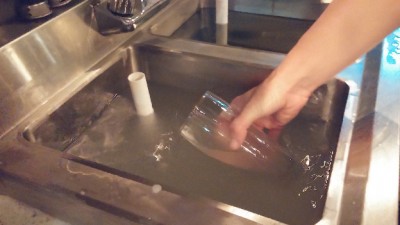
In truth, a good bartender or barback can plow through glassware in a triple sink faster than a dishwasher could. With energy, rental, water, and chemical costs, it’s probably cheaper too; I haven’t done the math, though. On a busy night, I would prefer a triple sink when I’m in the figurative “weeds” than a dish machine. For those of you who came out to opening night at Lake Monster Brewing’s new taproom, we estimate we had about 800 people and we handled all glassware by hand. I would have had it no other way.
The triple sink if used properly gets glassware much cleaner than a machine with hot water. You can see the way the soap and the water clings to the glass once scrubbed intensely on the mounted brushes that the glass will be spotless when it comes out. In a triple sink, the rinse basin is room-temperature water and the sanitizer is cold, which prevents the problem with warm glassware.
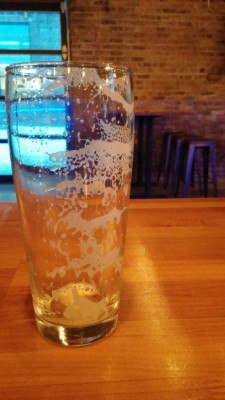
Proper use and then proper drying will ensure your glasses are proper temperature and spotless. A truly beer clean glass will show beautiful foamy residue clinging tightly to the side of the glass after it’s been drank, like the photo to the right. #mncleanpint
2. Use Proper Chemical
The chemicals you clean your glasses with are important, especially your sanitizer. Because sanitier is left on glassware as it dries, improper chemicals can make every single glass you use taste like soap. Not surprisingly, it will also transfer into and ruin your beers.
Not to sound like a broken record, but most commercial bar dishwashers use a chemical that leaves an odor and flavor on glassware. Another demerit for the dishwashers…and they’re loud! (Okay — my rant is over)
Beer Clean is a brand with powdered, pre-measured packets for three-compartment sink use, which I trust. I’ve also recently been introduced to a chemical that has dissolved Chlorine Dioxide, which I’m quite impressed with. Both of these leave your glasses without any residual flavors that may ruin beer.
3. Don’t Stack Pint Glasses
Every time I get a beer in a pint glass with a white, etched ring where the glass has been stacked over and over for years, a little piece of my soul cries. It pains me to see this, yet it’s an epidemic. I get that not every bar has enough space to avoid stacking pints 5 or 6 high, but if at all possible, pint glasses should not be stacked. It creates basically a ring of sandpaper on your glass upon which your fresh, delicious beer churns on the rough patch and creates foam, where an otherwise-perfect pour is ruined. Foamy beer causes wasted beer down the drain.
To Use or Not To Use
Like I said, I’m not against the use of the glass rinser. I just find them unnecessary if your bar is doing everything correctly. The only problem with them is that sometimes they are used to quickly and water is not allowed to drain out of the glass, leaving half ounce to an ounce of water in the bottom of your glass before the beer is poured. This can be easily avoided by shaking the water out of the glass after it’s sprayed. If your bar is doing everything correctly, then they are not needed. However, I would much prefer someone taking the time to rinse my glass again than to drink a soapy beer or have a warm and foamy beer.


